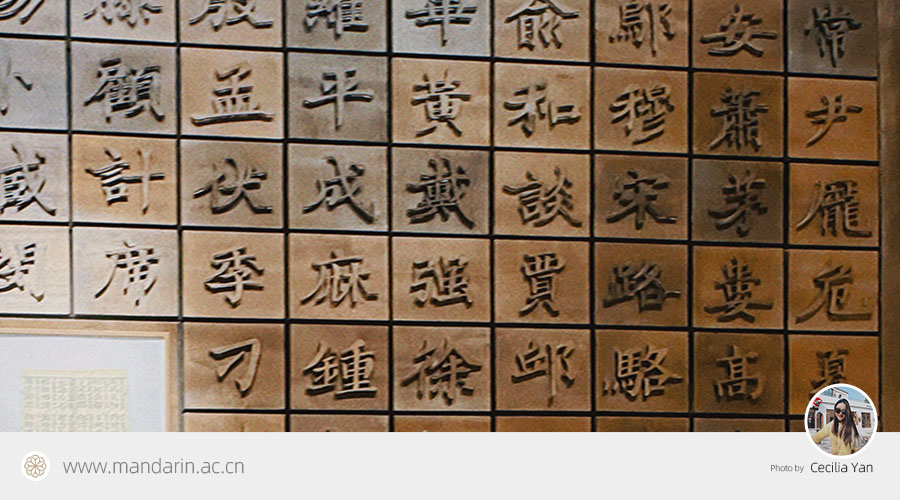拼音
Pinyin
拼音pīn yīninyin uses Latin letters to express the pronunciation of Chinese characters or words, it is the standard system of romanized spelling for transliterating Chinese.
It was first introduced in China in the 1950s as part of the effort to standardize the writing of Chinese characters across the country.
The purpose of introducing Pinyin was to enable people to easily write and read by providing a simple and consistent system of romanization that correlated to the Chinese language.Learning pinyin is just the first step in mastering Mandarin Chinese. It provides a solid foundation for further study and practice, allowing learners to gradually build their vocabulary and grammar skills.

3 Parts of A Pinyin Syllable
Pinyin of a single Chinese character is also called syllable, a syllable is composed of three parts: the initial consonant, the final vowel, and the tone. The Pinyin system uses letters which are the same as those used in the English alphabet. However, some of these letters have different pronunciations in Pinyin than they do in English.
23 Initial Consonants
A syllable starts with initial consonants. There are 23 in total, and they are divided into three categories: bilabial, alveolar, and velar.
The bilabial category includes sounds that are made by both lips coming together, such as "b" and "p".
The alveolar category consists of sounds made by the alveolar ridge (the bony structure behind the upper teeth) and the tongue, including "d", "t", "n", "l".
The velar category includes sounds made by the back of the tongue touching the soft palate (roof of the mouth), such as "g", "k", "h".
24 Final Vowels(Simple or Compound )
The final vowel is the ending part of a syllable, there are 24 in total. The final vowels play a crucial role in determining the pronunciation and acoustic characteristics of syllables. They modify and enrich the sounds produced by the initial consonants, contributing to the overall pronunciation and comprehensibility of Chinese words.
They are also represented by single letters in pinyin, such as a, o, e, or i. Like initials, some finals require two letters to accurately convey their sound. For example, the final 'ü' is represented by 'u' and 'v', while 'ai' is represented by 'a' and 'i'. These combinations are known as compound finals.
4 Pinyin Tones
The Chinese language, known for its complexity and richness, is a fascinating subject for learners worldwide. One of the most distinctive features of Mandarin Chinese is its use of four distinct tones or pitches in pronunciation.
The First Tone (ˉ): This tone is characterized by a high-level pitch at the beginning of the syllable and remains constant throughout.
The Second Tone (ˊ): The second tone starts with a low-level pitch, but then goes up to a high-level pitch.
The Third Tone (ˇ): The third tone starts with a mid-level pitch, which then falls to a low-level pitch before rising again.
The Fourth Tone (ˋ): The fourth tone starts with a high-level pitch, which then falls to a low-level pitch without rising again.

1st Tone
阴平
Flat

2nd Tone
阳平
Rising

3rd Tone
上声
Falling-Rising

4th Tone
去声
Falling
How A Pinyin Syllable Works
Learning how to use Hanyu Pinyin correctly is essential not only during the learning stage but also in our daily lives. For instance, when typing Chinese characters on a computer, efficient text input requires skillful use of Pinyin. Moreover, Chinese Pinyin is widely used in technical fields such as speech recognition and speech synthesis.
Example of A Syllable
As mentioned above, the 3 parts combine to form a complete Chinese Pinyin syllable. Each syllable is represented by a combination of one or more letters, and tone marks are used to indicate the pitch or tone of a syllable.
Initial + Final + Tone = Syllable
For example, the word 我(I; me;) is written as wǒ in Pinyin, where w is the initial consonant, o is the final vowel, and tone mark ˇ on the top of letter 'o' represents the third tone.
Number of Syllables
You may ask this question: How many syllables do I need to learn?
There are about 1300 syllables(with tone) in total, and each syllable represents one or more characters.
View the full list of syllables
View the table of syllables in one page
Mastering Pinyin alone will not enable one to read or write Chinese texts effectively. However, it serves as an excellent starting point for those who wish to delve deeper into the language.